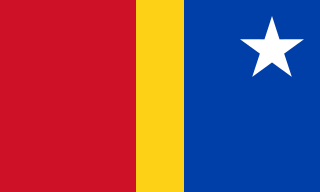Related Research Articles
Ali Dan Tsamiya known as Yaji I or Ali Yaji Dan Tsamiya was a king and later the first Sultan of Kano, a state in what is now Northern Nigeria. Yaji I ruled from 1359 to 1385 CE. A prominent figure in the state's history, Yaji used a religious revolution to finally solidify his family's grasp on Kano and its sub-kingdoms after centuries of strife. He was also responsible for the absorption of Rano into Kano.

Ibrahim Dabo was the leader of the Fulani Sullubawa in Kano and founder of the eponymous Dabo dynasty. His progeny has lasted over two centuries reigning as Muslim rulers of the ancient city-state of Kano. The dynasty has become synonymous with the ancient city-state in affectionate sayings as "Kano ta Dabo Cigari". They have independently ruled the Kano Emirate from 1819 until the Battle of Kano in 1903 which as a result of British colonisation transformed into the Kano Emirate Council.
Muhammad Dan Abdullahi, known as Muhammad Kisoki, was the Sultan of Kano from 1509 until his death in 1565. His 56-year reign is the longest of the state's Rumfawa era.
Abdullahi Dan Kanajeji, known as Abdullahi Burja, was the sixteenth ruler of Kano. Through forging of powerful alliances and the creation of trade routes, Burja shifted the identity of the Kano Sultanate towards trade and commerce, what Kano and its people are known for today. He was the first Hausa King to pay tribute to Bornu which secured an agreement to open trade routes from Gwanja to Bornu. He was also the first King to own camels in Hausaland. By the end of the 15th Century, Kano emerged as one of the most vibrant trading centers in the Sahel. Through trade, the Hausa language and culture was spread throughout the region.
Usman Zamnagawa Dan Shekarau, known as Usman Zamnagawa was the King of Kano from 1343 to 1349.
Barandamasu Tsamiya Dan Shekarau, known as Tsamiya, was the King of Kano from 1307 until his death at the hand of his half brother Usman Zamnagawa in 1343.
Kanajeji Dan Yaji, known as Kanajeji, was the 13th ruler of Kano and, for a period, the ruler of Zazzau. He reigned from 1390 - 1410. Like his father, Yaji I, Kanajeji was an intrepid king whose reign was characterized by war, conquest, and religious reformation. Kanajeji engaged in two long and pivotal wars with Umbatu and Zazzau, and eventually prevailed in both, after lengthy feuds. He took Umbatu in four attempts, and Zazzau after two battles. He also renewed the suzerainty his father had imposed over the Kwararafa. However, in a bid to conquer Zazzau, his reign also saw the return of the pagan practices his father sought to expunge. He is credited with revolutionizing Kano's army through the introduction of quilted leather armors (lifidi), steel armors, coats of mail, and iron helmets.
Muhammad Bugaya Dan Tsamiya, known as Bugaya, was a King of Kano who reigned from 1385 - 1390.
Kabe Dan Kumbari, known as Alhaji Kabe, was the thirty-ninth ruler of the Sultanate of Kano, reigning for the ten-year period between 1743 and 1753. He was primarily remembered by the Kano Chronicle as a malevolent and ruthless King. It is said that no record can be kept of the number of battles and wars he fought or those fought by the subkingdoms of Kano by his orders, most notably against Gobir. The baleful nature of his reign led to the ousting of the already unpopular bloodline of Muhammad Sharefa.
Warisi was the King of Kano from 1063 to 1095. He was the son of Bagauda and Saju.
Dauda was a Sultan of Kano who reigned from 1421 to 1438.
Muhammad Kukuna was a Sultan of Kano who reigned from 1651 to 1652, and again from 1652 to 1660. His reign was interrupted in 1652 by Soyaki.
Soyaki was a Sultan of Kano who reigned in 1652.
Dadi was a Sultan of Kano who reigned from 1670 to 1703.
Muhammad Sharefa was a Sultan of Kano who reigned from 1703 to 1731.
Kumbari was a Sultan of Kano who reigned from 1731 to 1743.
Sulaimanu was an Emir of Kano who reigned from 1807 to 1819.
Osumanu was an Emir of Kano who reigned from 1846 to 1855.
Abdullahi was an Emir of Kano who reigned from 1855 to 1883.
Muhammad Bello was an Emir of Kano who reigned from 1883 to 1892.
References
- ↑ Last, Murray (1980). "Historical Metaphors in the Kano Chronicle". History in Africa. 7: 161–178. doi:10.2307/3171660.
- 1 2 Palmer, Herbert Richmond, ed. (1908), "The Kano Chronicle", Journal of the Royal Anthropological Institute of Great Britain and Ireland , vol. 38, pp. 58–98 – via Internet Archive; in Google Books.
 This article incorporates text from this source, which is in the public domain .
This article incorporates text from this source, which is in the public domain .
